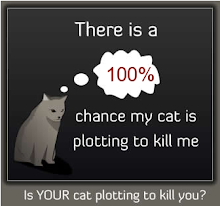This article is the second of two parts. You can read Part 1 here.
Part 2: Poverty, Homelessness, How We Count, and Exploding Some Myths
Old Woman at a Soup Kitchen from WikiHistoria (photographer attribution unknown)
In June 2011, 45.2 million Americans received food stamps according to the USDA's Supplemental Nutrition Assistance Program. The average benefit per person was $133.67 a month. That amounts to only $4.45 a day. I'm trying to envision what one can eat for three meals a day on $4.45. You know, thinking about it as if I was homeless, like my adopted son's biological mother, who is in her 60's and who looks not too different from the old woman above. She relies solely on food stamps and soup kitchens. Even with both those options, I'm thinking it isn't much food. And even someone with substance abuse problems both needs and deserves to eat, as far as I'm concerned. I've volunteered in soup kitchens before and other than for the holidays, it's pretty meager fare most of the time, especially if the soup kitchen relies on donations. What else will $4.45 a day buy her? According to The Economist's Big Mac chart of March 2011, prices for a McDonald's Big Mac vary from about $2.99 to as high as $4.28 across the USA. Even a bottle of water is more than $1, and in some of the convenience stores near her, likely closer to $2. She's not even five feet tall, and I'm thinking buying one large bottle and lugging it around (she's homeless remember- not a lot of storage options there) would be all but impossible for someone of her stature and overall health. (The average food stamp outlay per household, by the way, is $282.31, which comes out to $9.41 a day for a family.)
I won't tell you what I spend in a week at my local Whole Foods on my organic fruits and veggies, grass-fed beef and gluten-free and dairy-free alternative breads, milks and such. It would be too embarrassing at this point. But I'm not going to even try to pretend that someone can eat, let alone eat well, on $4.45 a day. You want to know what's that cheap? High fat, high sugar, highly unhealthy things that don't give you real nutrition but sort of fill you for the short term. And not fill you all that much, either. But those same foods are what can lead to obesity, metabolic syndrome and problems with diabetes. When you're poor, you have to eat something and if what's cheap is unhealthy, well, it's better than going to bed hungry at night is likely the way many adults look at it, for themselves and for their children.
But I know what you must be saying at this point- Marzie, Marzie, Marzie, those food stamps are supposed to *supplement* your income, not pay for all your food, silly! Well, the problem is, quite a few people don't have leftover income. My older son, a chef who makes just shy of $1800/month at a swanky hotel restaurant, which offers pretty decent benefits, typically eats at work for at least one meal a day because he eats for free there. He makes well above poverty level income. Nevertheless, after he was sinking into debt, we helped him make a better budget just the other day. He has very little left over for food after rent, utilities, car payment, car insurance, laundry costs, gasoline costs, medication costs, and of course, he doesn't even qualify for food stamps. Since striking out on his own with his shiny culinary degree he has lamented the cost of everything from bath mats to toilet paper to a simple bag of potato chips, let alone work needs like uniforms and his knives. Currently, he has no money for going out, for doing anything other than watching the occasional On Demand movie, although now he and his girlfriend are thinking even that's an extravagance they can't afford. That's right, he's learning the hard way, you can say. But see, he had us a rescue net- something that many, many people don't have, even if they have loving families that would want to help, if they could, but they simply can't help because they, too, are strapped. So our son is not pulling himself up, out of the not-a-speck of poverty of his upbringing, with his fancy-dancy Culinary Institute of America degree. Not at all. He's a low income "family" with his girlfriend and is working the maximum number of hours he can. Only, somehow, the thought that he will soon, as he will be aging out of parental healthcare coverage, be deciding whether to buy his mood stabilizer medication versus a week and a half of groceries is not very comforting to me. Only wait a minute, if he wants to eat at home but can't function, he won't have a job, now will he? But unless a miracle raise is on the horizon somewhere, make no mistake, that is exactly the choice he may be forced to make. You think it's an exaggeration, because after all, he'll have health insurance from his job. But he's taking a new-fangled medication, just like our youngest son is. Our co-pay, with top-notch insurance through my husband's work, for our youngest's single monthly medication is about $125/month. Yes, you read that right. That's our co-pay. The uninsured cost of the medication is somewhere around $800/month here in South Florida. And the medication for my older son is about the same. How would he be able to afford it, we wonder, if his health insurance isn't as good as his present insurance is? Take a different medication you say? Really? Of course, both psychiatrists have been totally arbitrary in their determination of our sons' needed medications, which in both cases have fewer side effects than previous generations of these medications. Taking a drug that pushes our older son closer to metabolic syndrome and diabetes just doesn't seem to be a good plan, somehow.
I'm sure many of us are aware of how hard it is to consistently get and/or stay on medication if you're homeless or poor. Those are difficult circumstances, even if you have federal health care like Medicaid or Medicare. (For more on this issue, check out Personal Failure's newest
post over at
Forever in Hell) But what about food? Surely there are many options if you're homeless or poor and hungry?
Think again.
A Food Not Bombs graphic
This past week, the Miami New Times had an article about the group Food Not Bombs. The group seeks to feed the homeless and claims that money spent on the American military machine strips the impoverished and homeless of any chance to escape their bleak situation. The article opens with group founder Keith McHenry being arrested as he is making the group's banner "End the Criminalization of Poverty" at a free food event in Lake Eola Park in the Orlando area. Orlando has passed a city ordinance that outlawed the serving of food to more than 25 people at a time because the homeless people would eat and then disperse throughout the ritzy Lake Eola neighborhood, disturbing the residents. In addition, Food Not Bombs can only serve each park in the city area twice. Orlando Mayor John "Buddy" Hugh says this is to "dilute the presence of the homeless in the City's open spaces." (Yeah, I know... deep breath on that one, right?) Fort Lauderdale, one county north of Miami, is exploring similar legislation. Fort Lauderdale has evidently been aggressive in the past two decades when it comes to preventing gatherings of homeless people and feeding those people. While I can't speak to the entire ethos of Food Not Bombs, what I can say is that looking at all these poverty statistics makes me think about how many people might be homeless and hungry, or just... hungry. I couldn't find a current estimate, in the 2010 Census, of the number of homeless people in the US. (The figure is now convolved with the number of people living in poverty.) But, wait a minute now, in order to have been counted, you had to be LIVING IN/NEAR OR VISITING SOME SORT OF DWELLING/STRUCTURE/SHELTER. Specifically, according to the US Census's site:
People who cannot determine a usual residence - Counted where they are staying on Thursday, April 1, 2010 (Census Day).
People at soup kitchens and regularly scheduled mobile food vans - Counted at the residence where they live and sleep most of the time. If they do not have a place they live and sleep most of the time, they are counted at the soup kitchen or mobile food van location where they are on Thursday, April 1, 2010 (Census Day). (under score mine)
People at targeted non-sheltered outdoor locations - Counted at the outdoor location where people experiencing homelessness stay without paying.
But see, the problem with all that is that many communities appear to be making it harder for homeless people to gather, to be served, to be... somewhere. And I wonder if some homeless people just didn't know that they had to show up to be counted on April 1, 2010? Did census workers really go out and count that guy I see sleeping near the 878 overpass? Did they count the guy who sleeps under the bus bench sometimes on Sunset Drive? What if some of these people didn't want to be counted? Like they were afraid of people coming up to them with pen and papers and asking them a whole bunch of questions? I've actually seen claims on some conservative blog sites (but one
example) that the homeless had to have been over-counted, whatever that final number really is.
There just can't be that many of them! Of course, that mindset leads me to wonder about being impoverished and some of the "foreign citizens living in the US:"
Citizens of foreign countries living in the U.S. - Counted at the U.S. residence where they live and sleep most of the time.
Citizens of foreign countries living in the U.S. who are members of the diplomatic community - Counted at the embassy, consulate, United Nations’ facility, or other residences where diplomats live.
I have to say that, while I certainly do believe that not all of the illegal aliens living in the US are impoverished, (not by a long shot, really) I do believe that a fair number might be and that they might not be too keen about being counted. (Maybe it's just me, but there's been this kind of unfriendly atmosphere around here lately for people living in the US illegally. But I might be wrong. Maybe those twelve people crammed into a two bedroom apartment wanted to be counted, or those people quietly living off the books with their friends in a Section VIII home might be willing to come out and wave to the census worker?)
Soup Kitchen Today, August 12, 2011, North Carolina
But I digress with the whole census business and counting how many people are really living at or below the poverty level in this country. I was talking about food and poverty right? There are a lot of people, if we just look at the level of poverty and the number of food stamps recipients, who struggle with food. How are we helping people eat? What is this about communities not wanting to feed the homeless or placing limits on the number of homeless that can be fed? What are these people guilty of? (Either the ones who are hungry or the ones who feed?) They appear to be guilty of being there. I keep turning McHenry's banner over in my mind. Are we essentially criminalizing the impoverished? While I'm not exactly sure that we're calling them criminals, I am sure that there is more rhetoric these days that makes it seem as if people who are poor are somehow poor by choice, or by laziness or somehow as if they are at fault for their situation. This not-so-subtle undercurrent seems to suggest that if people would just pick themselves up and work harder they wouldn't be poor anymore. Kind of like that argument that if people worked better jobs, they'd have (better or any) healthcare, right?
So here's my first problem with that: for one in five people under the age of 18, I'm not really sure what they should be doing that they aren't doing, are you? If they were born to poor families, it's obviously a 'mistake' they can't remedy right now. In fact, if I go back to those ChildStat.gov tables, I'm likely to conclude born in poverty, stay in poverty. (Going back to Part 1 of this article, no doubt these kids should be working extra hard in school in order to be able to eventually get smartphones, so they can get jobs later. As for these kids' e-Reader situations, I'm recalling that alarming statistic from the National Institute for Literacy that showed that 47% of Detroit's population is functionally illiterate and thinking that if you're planning to teach people to read, having plenty for them to read is a very excellent plan and one that may not involve Kindles, Nooks or Kobo readers, let alone pricey things like iPads.)
And once again, there is my other big problem, which I've talked about before on this blog. Being poor is damned expensive. For example, when you are poor, you may not have a car to drive to a regular grocery store or a Costco or BJs in order to buy less expensive things. Even if you can get there on public transportation, you may not have the money to pony up for those big packages and then again, after trying to make it home on said same public transportation with those discount treasures, in your small dwelling you may not even have the space to accommodate those packages. No, as I know full well from friends and some of my GAL kids, you pay premium prices for a few items at a time, at your neighborhood convenience store or your small corner store that lets you slip the money into the pass-through drawer that slides under the bulletproof glass. In fact, you pay more for many, many things and when you're late on paying what you owe for those things, whether it's your credit card's minimum payment or that car insurance policy that you let lapse, you will pay still more in the end, because you didn't have the money to pay on time. And then, of course, there's the healthcare that you can't afford but like every human at some time or another, you will need. There's even just simple birth control, trying to prevent having another mouth to feed/shelter/clothe/keep healthy/educate/love. (Birth control? Now there's something expensive and getting harder to obtain, especially if Planned Parenthood has fewer locations. Because that's right, you better not be poor but if you are poor, heaven help us if you get pregnant and don't want to be. How did you even get pregnant if you're poor and can't afford kids? Surely there are scads of things you can/should be doing other than have sex, right? Sex is for people who can afford it, didn't you know that?) And about when you'll have time to be getting all that stuff? You know that food, healthcare, medication, stuff? If you're fortunate enough to have a job, any job, let's think about all that free time you'll have to get them when you work and you're working poor. Because you'll have lots of paid time off or vacation days to get it all done, right? Oh, all that can get done on the weekend? Well, okay, maybe not the medical. But I mean, really, on a week day, how much time would it really take to use public transportation to get to that clinic that sees patients for free, or for medicaid rates or for your insurance that lets you see any of five doctors in your entire county. You don't want to know how long it could take. Really, you don't. But we are not, I assure you, talking about your lunch break time. And heaven help you if your child gets sick. As my former GAL youth Snow White can tell you, having a sick child can derail not just your schooling, your job, but your entire way of life when you are poor.
But speaking of schooling and education, it's supposed to be the path out of being poor. Yes, if you want to make it out of poverty, which is, of course, your absolute moral obligation, you've got to pull yourself up, get yourself educated, get a college degree, so that you can.... make minimum wage and get no benefits while working as a receptionist in a realty office, like my daughter, who graduated in 2010 with a magna cum laude Bachelor's degree in Biology from FSU, did for a while. She's now in grad school, studying pharmacy. Here's how she's pulling herself up: her parents are paying for her graduate degree so she won't be in debt for much of the rest of her adult life with federal student loans. That would be the debt that no doubt would be cleared just in time for her to accrue further educational debt with her own adult children. The debt that is described as crippling students' hopes, dreams, credit ratings and which now has record rates of default. My daughter worked hard when she worked and could not afford to live on her own and could not find a job in her field of study. In at least one instance she was told she was just too overqualified. She gave up trying to find a better and more appropriate job. (Hey, your present employer is always soooo understanding about your looking for a better job than they one they're currently providing you and they're always willing to let you take longer lunches to go interview for those other jobs, right?) No, instead she bided her time for grad school admission. And she is far from the exception. Brittany Misra is another example sited in a recent article in the Atlanta Journal-Constitution. A 2008 graduate from Emory with a degree in bio-cultural anthropology, Ms. Misra was making her cultural observations from behind the barrista counter in an Atlanta Starbucks. (Hey, she's lucky- everybody knows that Starbucks has a great benefits plan!) But seriously, as a recent article in the Washington Post points out, college graduates are the fastest growing sector of the population when it comes to bankruptcy filings. Education, clearly, is no shield from falling into poverty. Although, having an education certainly appears to give you a leg up when it comes to finding ways to cover yourself from falling further into poverty or even jail. So there's that. Hopefully if you got that college degree, you can fill out all the proper forms for your bankruptcy filing, unlike 47% of the population in Detroit. But if you want to talk about some of what education won't shield you from, look no further than the ChildStats.gov charts about food insecurity.
It comes as no surprise that having a parent or guardian without a high school diploma confers a certain risk of food insecurity. But the fact that having more educated parents is not as much of a buffer as you might think is rather stunning. From the table at ChildStats:
Looking at the increase in food insecurity since 1995, even for those who have attained a bachelor's degree or higher (which has almost doubled!), drives home the point that even education is not enough to shield families entirely from poverty. And that's what more people need to think about. I actually know quite a few people who are literate, quite well-educated and who struggle mightily with caring for their families, teetering on the brink of a financial abyss. Quite. a. few.
So what is it then, about poverty? What is it that we are blaming homeless or poor people for?
Yesterday I saw this article on ABC's news website that blazoned the title:
Tax the Rich, Obama Says; Class Warfare, GOP Says. Well, it's no secret that I tend to be on the liberal social democrat side of things but I seriously wonder how the GOP thinks things have gone down, historically speaking, with a very large, increasingly impoverished, overtaxed class of citizens and a small, elite, undertaxed class of citizens, who considered themselves the "job-providers". Hmmm. Seems to me there were some revolutions a while back in similar circumstances. Of course, there are still plenty of semi-successful oligarchies around the world. (I'm trying to think of one
not on an Amnesty International blacklist for something but am currently drawing a blank.) I look at brief articles like the one
posted the other day on CNN about Rick Perry's own state's poverty debacle- one in five Texans live in poverty, their poverty level is growing faster than other states, they collect fewer food stamps and have less healthcare and Texas has one of the lowest per capita spending rates on its citizens. Perry's claims of job creation all deal with
low paying jobs, which doubtless mean jobs with few, if any, benefits. Texas ties Mississippi for the highest percentage of minimum wage workers in the country. And all that just makes me look at the current unemployment figures of only 9.1 % and shake my head as I think about the people that gave up making claims or the people who are currently
under-employed, in jobs that are just under full time or jobs that are at or below minimum wage and which will do nothing to help pull them out of poverty. Where are we going in this country? Class warfare?
Isn't that where we already are?
I've just started reading Thomas Keneally's Three Famines. The premise of the book is that politics, not natural disaster, are key to some of the great famines in modern world history. He counts racial discrimination, distribution failures and lack of accountability of leadership as factors greater than crop failures in determining the course of famine. Keneally opens his book with a quote by Nobel Laureate Amartya Sen:"No famine has ever taken place in the history of the world in a functioning democracy." Sadly, all I could think about after reading that quote was that Ireland's famine in the 1800's was basically driven by an
oligarchy. Keneally talks about the amorality of famine.
Maybe a better dialog in this country would be served by talking about the amorality of poverty and what we're going to do about making sure that it doesn't worsen.
Stop blaming the poor for being poor. They aren't the problem here.
Against the Wall, 1934 by Dorothea Lange
Unfortunately, due to an absolute masterpiece of an article in the National Review by Rand Paul, countering Bernie Sander's take on poverty, I'm going to have to extend this article to three parts. Because there is just so much to despise and argue with in Rand Paul's statements, I couldn't even take it at first. Evidently he went to the Michele Bachmann School of Truthy Facts. You know, he's just following the practice of those truthy facts that Bachmann reels off like those about founding fathers fighting slavery and HPV vaccines causing mental retardation? Yeah. Only substitute Rand and poverty.
Mr. Paul, please see my gauntlet below. Have you been to any of your government's statistics websites lately? Well sir, I have...
© Bright Nepenthe, 2011











































